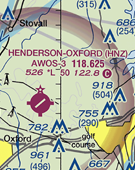Newsletter: Fall 2008
SYNOPSIS
The summer days are officially behind us now with a forecast of frost on the pumpkins. Out with the hot, humid days of summer and in with the crisp, cool, (and maybe) cold days of Fall. The holiday season is upon us which fosters new flying weather / conditions. Frost on the wings can ruin your takeoff, and ice during flight can ruin your day. With the colder temperatures comes stronger surface winds which equates to greater crosswind components. With the newness of the season comes earlier darkness so proficiency in a number of areas must be taken including night time currency as well as a better understanding of freezing levels (and aerodynamics if ice is present). If you’re flying cross country, survival gear must be considered as an addon to your thinking and planning. Hypothermia can be very dangerous and with night time coming as early as 5 pm, so do the lower temperatures. Always have a warm jacket on the plane as well as a charged cell phone … just in case.
Our Fall ground school will be finished by early November with ten students participating in learning the art of flying. Rick Gutlon has taught some portions of the class as he works towards an AGI which has been richly received. Myself and Wayne Webster have been the other part of the staff. The class trip to RDU was enjoyed by all and included a visit to the NCDOT, where Tom Freeman was our host, as well as a briefing at the RDU FSS. We’re trying to get into the RDU tower facility, but that may still pose a problem after the 2001 9/11 incident.
While at RDU’s Flight Service Station we learned that a) the facility no longer operates 24/7 and b) RDU FSS no longer handles air-to-ground radio calls. So when you contact “Raleigh Radio” to open or close a flight plan on 122.65 or 122.45, your air-to-ground call is responded to by individuals in Leesburg, VA. Hopefully this is not an indication of things to come for this long-established and well respected facility at our hometown airport.
NOTAMS
When starting an engine near an open hangar, always make sure the prop blast is not going to take a mechanics paperwork and blow it to the back of his facility! Mechanics do not like this! Also, some pilots have asked us not to start the planes and blast their new paint jobs which cost thousands of dollars.
Headsets have again been disappearing from aircraft and I have no choice but to start charging for usage. I have personally lost my Telex ANR headset that I have had for years and the cost of the unit was around $650.00. This is a new problem that has never shown itself over the past 16 years.
We recently had a plane nearly roll into a twin Cessna 402 because the Cherokee was not secured post flight. Use common sense and think before you walk away from an aircraft towards the office / lounge, or your car.
Hangar rash has again occurred on 46T with the elevator being pushed into the 6″x6″ post. To date, no one has come forward to accept responsibility which is both disturbing and disappointing. The accountability of this individual to Empire is one issue; just as disconcerting is their lack of responsibility to their fellow aviators.
Items like this should never be left to be discovered by another pilot during a preflight. Think safety first and please consider the next person taking out the aircraft you’ve just flown. If you feel / know something is not right with an aircraft, make a note in the log book. If it’s significant and Paul is not around, call him on his cell phone, leave a note on his desk / under the office door, and if appropriate, put a note on the yoke of the aircraft to alert the next pilot.
I’m getting regular reports that a number of aircraft are found with their light switches in the “on” position the morning after night flights. This means the master switch was turned off with the lights (navigation, taxi / landing, and sometimes strobes) blaring. This is not good for the equipment or the electrical systems. Follow a shutdown checklist. If you need an easy mnemonic, one to consider is:
SLIM
– turn off all Switches (lights, avionics, etc.)
– Lean the engine
– turn off the Ignition
– turn off the Master
Also…it is not necessary to turn off the transponder. This creates excess wear on the electronics as well as the fragile knobs used on the older units.
Always use a rough field takeoff technique while departing runway 32. The first 400′ is still tough on the nose gear and airframe. It helps to keep that nose gear assembly off the runway during the initial rollout. The runway has filled in nicely during the past summer with the help of all the rain we received from May thru October. No drought this season…


